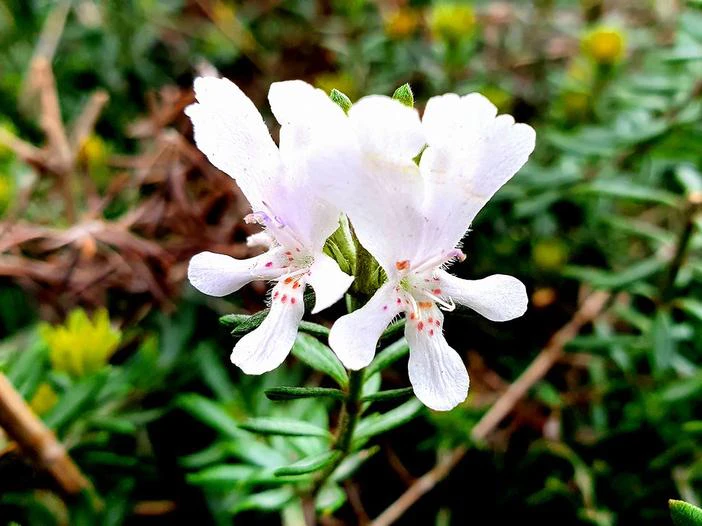Long-Leaved Westringia
(Westringia longifolia)
Long-Leaved Westringia (Westringia longifolia)
/
/

Joan Simon
CC BY-SA 2.0
Image By:
Joan Simon
Recorded By:
Copyright:
CC BY-SA 2.0
Copyright Notice:
Photo by: Joan Simon | License Type: CC BY-SA 2.0 | License URL: https://creativecommons.org/licenses/by-sa/2.0/ | Uploader: Joan Simon | Publisher: Flickr












Estimated Native Range
Climate Requirements for Coachella, California
| This Plant | Your Site | Plant Suitability for Your Location | ||
|---|---|---|---|---|
| • Precipitation | 21" - 61" | 3" | Your precipitation may be insufficient for this plant. Irrigate N" / year. | Irrigate N" / year |
| • High Temp. | 69°F - 94°F | 110°F | Your summers may be too hot for this plant. | Too hot |
| • Low Temp. | 22°F - 48°F | 40°F | Your winter temperatures are normal for this plant | Excellent |
This plant should grow well at your location with about N inches per year (Y minutes per month) of irrigation.
Summary
Westringia longifolia, commonly known as Long-Leaved Westringia, is an evergreen shrub native to coastal heathlands and open forests in New South Wales, Australia. It typically grows to a height of 1–3 m (3 ft 3 in – 9 ft 10 in) with a similar spread, featuring a dense and bushy habit. The leaves are narrow, long, and gray-green, giving the plant a soft, textured appearance. Westringia longifolia produces small, tubular flowers that are mostly white or occasionally mauve with purple spots, and they have a light brown, silky interior. The flowering season extends from July to December, with the flowers being modestly showy and attracting bees and other pollinators.
This shrub is valued for its drought tolerance and ability to thrive in coastal conditions, making it an excellent choice for seaside gardens, low hedges, and as a general-purpose landscape plant. It is also used for erosion control on slopes. Long-Leaved Westringia is adaptable to a range of soil types, provided they are well-drained, and it can tolerate both full sun and part shade. While it is generally low-maintenance, occasional pruning can help maintain its shape and encourage denser foliage.CC BY-SA 4.0
This shrub is valued for its drought tolerance and ability to thrive in coastal conditions, making it an excellent choice for seaside gardens, low hedges, and as a general-purpose landscape plant. It is also used for erosion control on slopes. Long-Leaved Westringia is adaptable to a range of soil types, provided they are well-drained, and it can tolerate both full sun and part shade. While it is generally low-maintenance, occasional pruning can help maintain its shape and encourage denser foliage.CC BY-SA 4.0
Plant Description
- Plant Type: Shrub
- Height: 3-6 feet
- Width: 3-6 feet
- Growth Rate: Moderate
- Flower Color: White, Purple
- Flowering Season: Winter, Spring, Summer
- Leaf Retention: Evergreen
Growth Requirements
- Sun: Full Sun, Part Shade
- Water: Low
- Drainage: Medium, Fast
Common Uses
Bee Garden, Bird Garden, Butterfly Garden, Drought Tolerant, Groundcover, Hedges, Low Maintenance, Showy Flowers
Natural Habitat
Coastal heathlands and open forests in New South Wales, Australia
Other Names
Common Names: Coastal Rosemary
Scientific Names: Westringia longifolia
GBIF Accepted Name: Westringia longifolia R.Br.